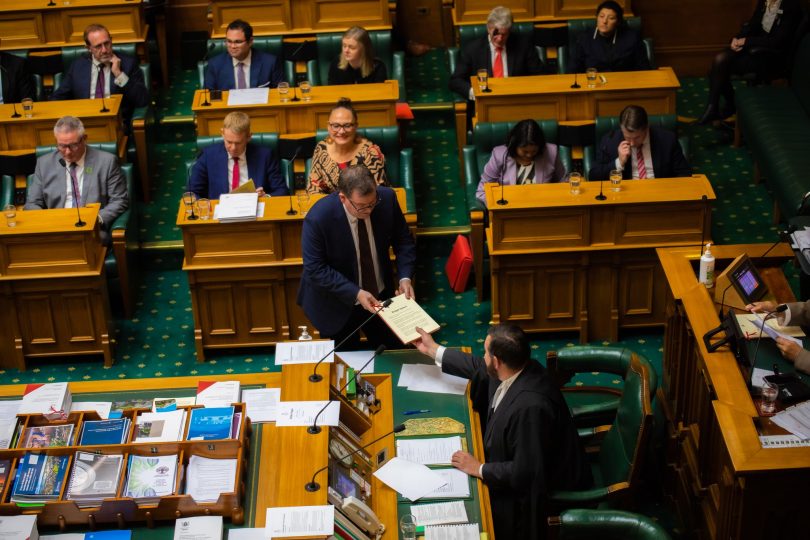I try not to indulge in trans-Tasman gloating, but New Zealand released its budget on 18 May and the comparison in the chart below left me more than slightly tempted.

As Australian aid shambles along under 0.2% of GNI, New Zealand aid is – on paper at least – set to rocket up to something in the vicinity of 0.34%. (I say “something in the vicinity of” because New Zealand only publishes data including aid to Cook Islands, even though Cook Islands is no longer ODA eligible. In the chart above I have had to estimate aid to the Cooks and remove it from recent years for New Zealand to enable a fair comparison with Australia.)
Compared to the sorry state of Australian aid spending, 0.34% really seems like something. Indeed, compared to the state of New Zealand aid spending, 0.34% really seems like something. The last time New Zealand’s aid to GNI ratio was this high was in the 1970s.
It seems impressive, but the reality is more complicated. To understand why, you need to look at the next chart.
This chart shows New Zealand aid flows (in NZD, and including Cook Islands, which doesn’t change matters much). Also marked on the chart in vertical blue lines are the ends of the three year periods over which New Zealand aid is sort of budgeted (more on “sort of” in a second).

Taking inflation into account, New Zealand aid is set to increase by about 33% in the coming year. That’s a big lurch upward. So big it begs the question: why? What’s happened in New Zealand? China panic? A sudden outbreak of effective altruism?
The actual answer is more mundane: as you can see from the blue lines on the chart, the coming year will be the final year of the current three year aid budget period. The aid program needs to spend a lot if it wants to spend the current three year allocation while it has it.
This, of course, raises another question: how did the aid program end up so far behind schedule on spending? Part of the reason is that the current three year allocation increased a lot last budget thanks to the government’s new climate finance initiative. (Recall my “sort of” comment above about three year budget allocations. Governments can, and do, change allocations midway through.) New Zealand’s increased climate aid spend is great, but it has left the Ministry of Foreign Affairs and Trade (MFAT) a bigger job when it comes to getting aid money out the door. It has also meant MFAT has had to start worrying a lot more about delivering climate finance, something it doesn’t necessarily know much about. And that is likely another reason why spending has been delayed to-date: MFAT is probably struggling to get climate projects off the ground.
All of which leads to one more question: can MFAT realistically spend the increased aid next year? Perhaps. It might have a bunch of big climate infrastructure projects about to launch, for example. Or if it wanted, it could increase its multilateral contributions with a large, one-off boost. (Upping multilateral contributions for this end was once derided on Devpolicy by MFAT’s chief aid economist as “washing up”, but it’s not a bad approach – there are plenty of good multilaterals that don’t have to spend in a hurry, and which could use the money well.)
There’s one other option though. The aid program might simply fail to spend its full three year allocation. What happens then? There are precedents. At points in the past, the remaining allocation has simply been rolled into the next three years. This is possible, but not guaranteed. It would require political approval, which might not be granted (particularly if the government changes later this year).
So 0.34% looks remarkable on paper, but it’s more complicated in reality. Had spending been more evenly distributed, New Zealand’s ODA/GNI ratio would have been closer to 0.3, perhaps 0.31. That’s still a lot better than Australia. I’d be tempted to gloat, except that for now I’m busy worrying how this year’s increase is going to be spent.
Disclosure
This research was undertaken with the support of The Bill & Melinda Gates Foundation. The views are those of the author only.



Leave a Comment